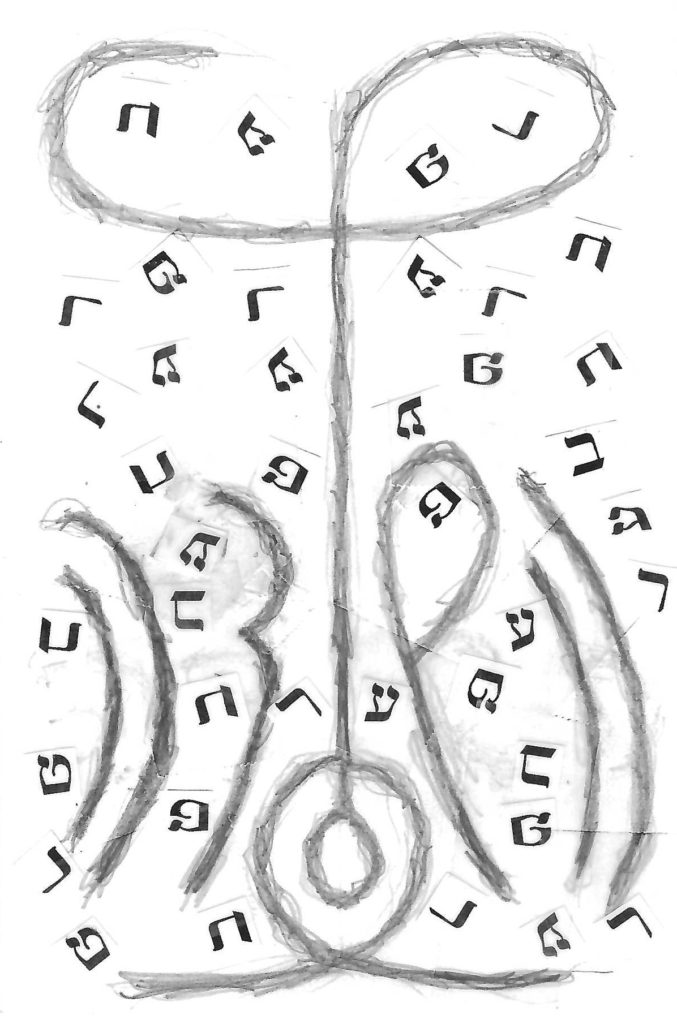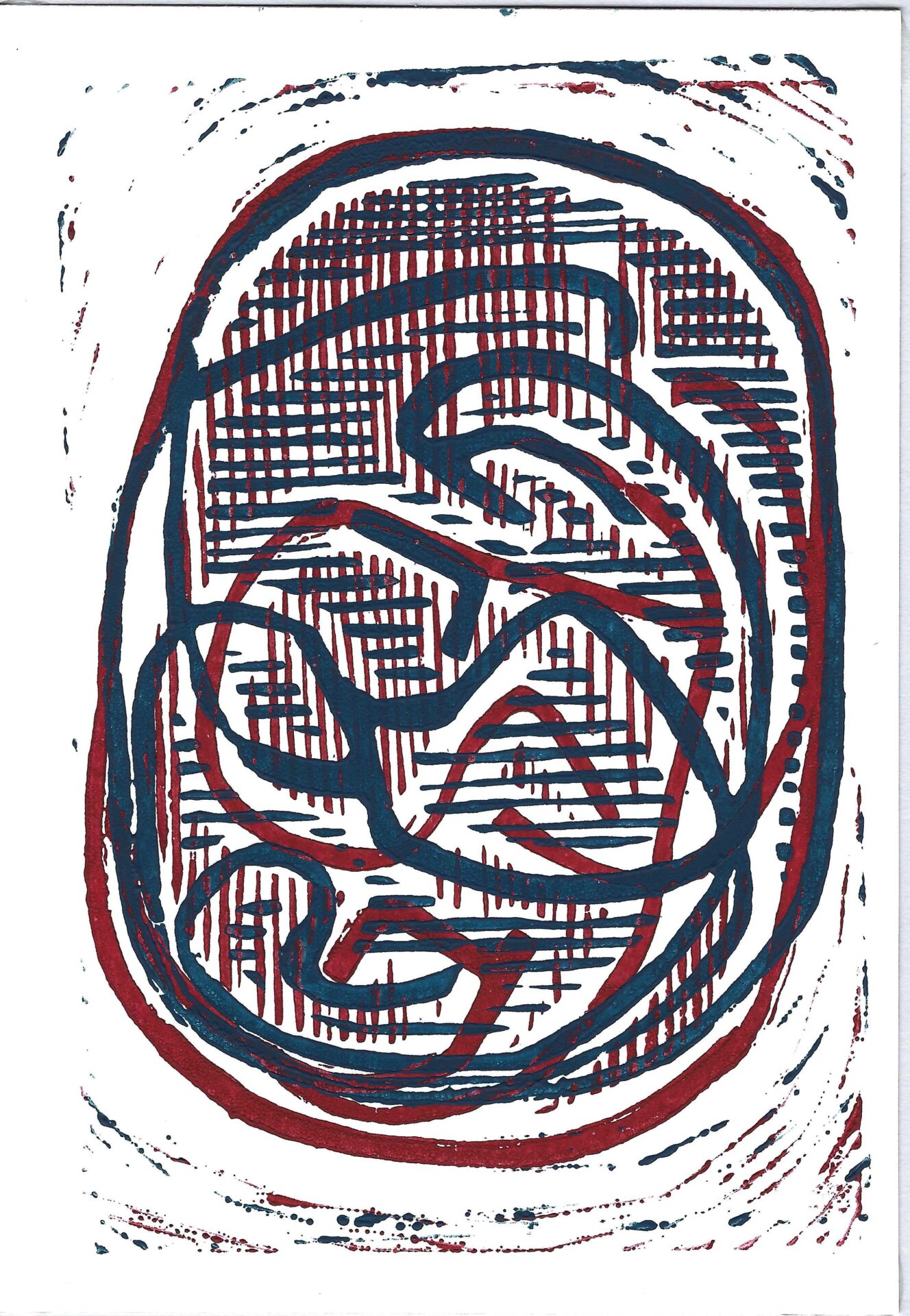In this New Year,
may we embrace the potential of
each generation of seeds to
transform the fields of our planet for good.
May these seeds yield
growth, blessing, repair, and peace.
A contemporary view of this verse stresses the symbolic nature of trees: “the anthropomorphic form of trees, which like people have roots (feet), a trunk (body), branches (hands), twigs (fingers), and leaves (hair).” (Prof. Shai Secunda of Bard College)
This idea of humanizing trees is at the core of the poem by award-winning Israeli poet Natan Zach titled “Tree of the Field.” Written after the 1982 Israeli war with Lebanon and set to music by Shalom Chanoch, it became a national song of grief.
In preparing this year’s card, I extend this metaphor. As the tree symbolizes humans, the field represents our natural world, a symbiotic relationship.
In this year’s card the Hebrew letters that spell tree: עץ (in script form, with the ע inverted) depict the tree. Similarly, the script of the letters that spell [grasses of] the field: השדה portray the field.
A number of renditions of the song are available on YouTube:
American Cantor Azi Schwartz:
initial concept
At the January 2023 gathering of the Pacific Association of Reform Rabbis, I participated in a workshop on creativity and the rabbinate. We were offered a prompt. Combining Genesis 2:9 and Deuteronomy 20:19, I drew:

I imagined the “tree of the field” as the tree of the knowledge of good and evil in the center of the garden.
The image and the thought were too complex to fit into my 4″ x 6″ format:







